So guys here comes the most awaited project of machine learning Face Recognition based Attendance System. As the name says this project takes attendance using biometrics (in this case face) and is one of the most famous projects among college students out there.
I have tried to make the project the easiest way possible. So without any further due, Let’s do it…
How do Face Recognition based Attendance Systems Work?
- Face recognition technology involves analyzing and identifying a person’s facial features using advanced algorithms.
- It captures and compares unique facial characteristics, such as the distance between the eyes, the shape of the nose, and the contours of the face.
- This technology has come a long way and is now capable of near-instantaneous recognition with remarkable accuracy.
- They use a camera to capture an individual’s face, analyze the facial features, and compare them with a database of pre-registered faces.
- If a match is found, attendance is recorded. These systems can also adapt to variations in lighting, facial expressions, and aging, ensuring reliability.
Snapshots of our App
Home Page
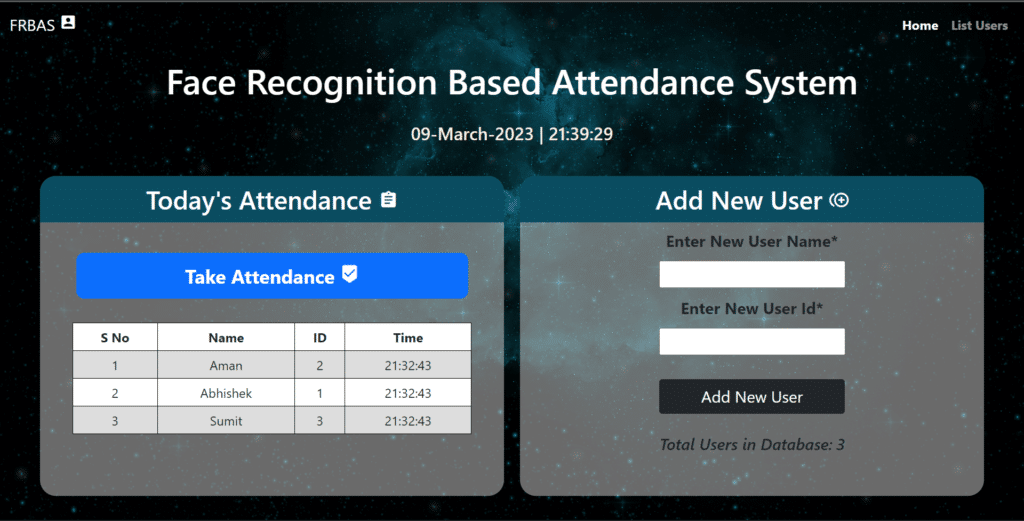
List Users Page
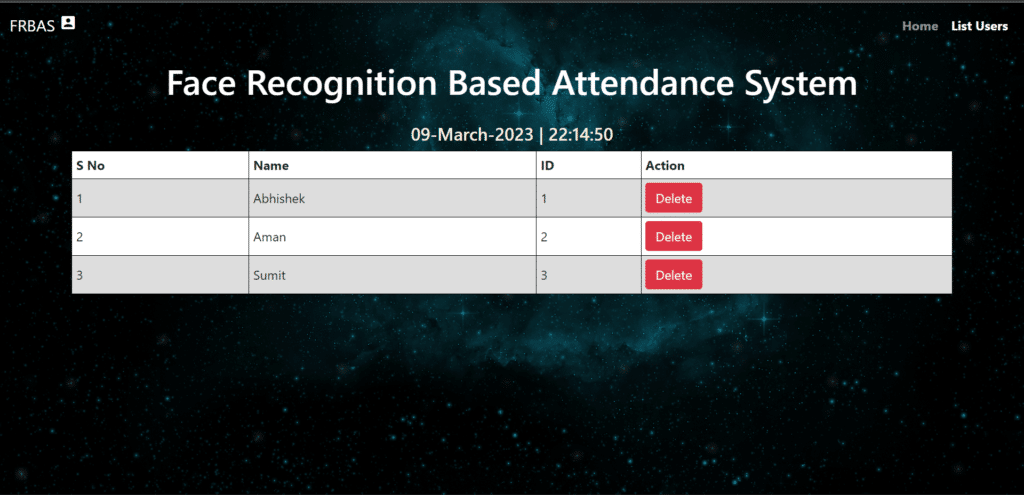
Attendance Sheet
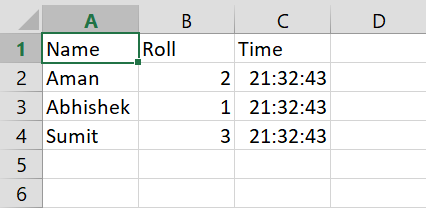
Code Walkthrough of Face Recognition Based Attendance System
app.py
# Face Recognition based Attendance System
import cv2
import os
from flask import Flask, request, render_template
from datetime import date
from datetime import datetime
import numpy as np
from sklearn.neighbors import KNeighborsClassifier
import pandas as pd
import joblib
# Defining Flask App
app = Flask(__name__)
# Number of images to take for each user
nimgs = 10
# Saving Date today in 2 different formats
datetoday = date.today().strftime("%m_%d_%y")
# Initializing VideoCapture object to access WebCam
face_detector = cv2.CascadeClassifier('haarcascade_frontalface_default.xml')
# If these directories don't exist, create them
if not os.path.isdir('Attendance'):
os.makedirs('Attendance')
if not os.path.isdir('static'):
os.makedirs('static')
if not os.path.isdir('static/faces'):
os.makedirs('static/faces')
if f'Attendance-{datetoday}.csv' not in os.listdir('Attendance'):
with open(f'Attendance/Attendance-{datetoday}.csv', 'w') as f:
f.write('Name,Roll,Time')
# get a number of total registered users
def totalreg():
return len(os.listdir('static/faces'))
# extract the face from an image
def extract_faces(img):
if img != []:
gray = cv2.cvtColor(img, cv2.COLOR_BGR2GRAY)
face_points = face_detector.detectMultiScale(
gray, 1.2, 5, minSize=(20, 20))
return face_points
else:
return []
# Identify face using ML model
def identify_face(facearray):
model = joblib.load('static/face_recognition_model.pkl')
return model.predict(facearray)
# A function which trains the model on all the faces available in faces folder
def train_model():
faces = []
labels = []
userlist = os.listdir('static/faces')
for user in userlist:
for imgname in os.listdir(f'static/faces/{user}'):
img = cv2.imread(f'static/faces/{user}/{imgname}')
resized_face = cv2.resize(img, (50, 50))
faces.append(resized_face.ravel())
labels.append(user)
faces = np.array(faces)
knn = KNeighborsClassifier(n_neighbors=5)
knn.fit(faces, labels)
joblib.dump(knn, 'static/face_recognition_model.pkl')
# Extract info from today's attendance file in attendance folder
def extract_attendance():
df = pd.read_csv(f'Attendance/Attendance-{datetoday}.csv')
names = df['Name']
rolls = df['Roll']
times = df['Time']
l = len(df)
return names, rolls, times, l
# Add Attendance of a specific user
def add_attendance(name):
username = name.split('_')[0]
userid = name.split('_')[1]
current_time = datetime.now().strftime("%H:%M:%S")
df = pd.read_csv(f'Attendance/Attendance-{datetoday}.csv')
if int(userid) not in list(df['Roll']):
with open(f'Attendance/Attendance-{datetoday}.csv', 'a') as f:
f.write(f'\n{username},{userid},{current_time}')
################## ROUTING FUNCTIONS #######################
####### for Face Recognition based Attendance System #######
# Our main page
@app.route('/')
def home():
names, rolls, times, l = extract_attendance()
return render_template('home.html', names=names, rolls=rolls, times=times, l=l, totalreg=totalreg())
# Our main Face Recognition functionality.
# This function will run when we click on Take Attendance Button.
@app.route('/start', methods=['GET'])
def start():
if 'face_recognition_model.pkl' not in os.listdir('static'):
return render_template('home.html', totalreg=totalreg(), mess='There is no trained model in the static folder. Please add a new face to continue.')
ret = True
cap = cv2.VideoCapture(0)
while ret:
ret, frame = cap.read()
if len(extract_faces(frame)) > 0:
(x, y, w, h) = extract_faces(frame)[0]
cv2.rectangle(frame, (x, y), (x+w, y+h), (86, 32, 251), 1)
cv2.rectangle(frame, (x, y), (x+w, y-40), (86, 32, 251), -1)
face = cv2.resize(frame[y:y+h, x:x+w], (50, 50))
identified_person = identify_face(face.reshape(1, -1))[0]
add_attendance(identified_person)
cv2.putText(frame, f'{identified_person}', (x+5, y-5),
cv2.FONT_HERSHEY_SIMPLEX, 1, (255, 255, 255), 2)
cv2.imshow('Attendance', frame)
if cv2.waitKey(1) == 27:
break
cap.release()
cv2.destroyAllWindows()
names, rolls, times, l = extract_attendance()
return render_template('home.html', names=names, rolls=rolls, times=times, l=l, totalreg=totalreg())
# A function to add a new user.
# This function will run when we add a new user.
@app.route('/add', methods=['GET', 'POST'])
def add():
newusername = request.form['newusername']
newuserid = request.form['newuserid']
userimagefolder = 'static/faces/'+newusername+'_'+str(newuserid)
if not os.path.isdir(userimagefolder):
os.makedirs(userimagefolder)
i, j = 0, 0
cap = cv2.VideoCapture(0)
while 1:
_, frame = cap.read()
faces = extract_faces(frame)
for (x, y, w, h) in faces:
cv2.rectangle(frame, (x, y), (x+w, y+h), (255, 0, 20), 2)
cv2.putText(frame, f'Images Captured: {i}/{nimgs}', (30, 30),
cv2.FONT_HERSHEY_SIMPLEX, 1, (255, 0, 20), 2, cv2.LINE_AA)
if j % 5 == 0:
name = newusername+'_'+str(i)+'.jpg'
cv2.imwrite(userimagefolder+'/'+name, frame[y:y+h, x:x+w])
i += 1
j += 1
if j == nimgs*5:
break
cv2.imshow('Adding new User', frame)
if cv2.waitKey(1) == 27:
break
cap.release()
cv2.destroyAllWindows()
print('Training Model')
train_model()
names, rolls, times, l = extract_attendance()
return render_template('home.html', names=names, rolls=rolls, times=times, l=l, totalreg=totalreg())
# Our main function which runs the Flask App
if __name__ == '__main__':
app.run(debug=True)
- Line 1-9: We are importing the required libraries.
- Line 11-12: Defining the Flask App.
- Line 14-15: We are defining a constant ‘nimgs‘ which defines how many images to capture for each user while registering.
- Line 17-18: Getting today’s date to use in the program ahead.
- Line 21-22: Loading the ‘haarcascade_frontalface_default.xml‘ HaarCascade file to detect faces.
- Line 25-34: Checking if the required folders are in place or not, If not create them. Also, create today’s attendance file if it’s not present in the Attendance folder.
- totalreg(): A function that counts the total number of registered users.
- extract_faces(): A function that extracts the face from an image. It uses the HaarCascade file we loaded above.
- identify_face(): A function that identifies the faces in the given image using the trained KNN model.
- train_model(): A function that trains the KNN model on all the faces available in the faces folder.
- extract_attendance(): A function that extracts information from today’s attendance file in the attendance folder.
- add_attendance(): A function that adds the Attendance of a specific user in today’s Attendance file.
Routing Functions:
- home(): Our main page routing function.
- start(): Our main function that will take attendance when we click on the Take Attendance Button.
- add(): Function to add a new user.
- The last 2 lines are to run the Flask App.
home.html
<!doctype html>
<html lang="en">
<style type='text/css'>
* {
padding: 0;
margin: 0;
font-family: 'Segoe UI', Tahoma, Geneva, Verdana, sans-serif;
}
body {
background-image: url('https://cdn.pixabay.com/photo/2018/12/18/22/29/background-3883181_1280.jpg');
background-size: cover;
font-family: sans-serif;
margin-top: 40px;
height: 100vh;
padding: 0;
margin: 0;
}
table {
border: 1px;
font-family: arial, sans-serif;
border-collapse: collapse;
width: 86%;
margin: auto;
}
td,
th {
border: 1px solid black !important;
padding: 5px;
}
tr:nth-child(even) {
background-color: #dddddd;
}
</style>
<head>
<!-- Required meta tags -->
<meta charset="utf-8">
<meta name="viewport" content="width=device-width, initial-scale=1">
<link rel="stylesheet" href="https://fonts.googleapis.com/icon?family=Material+Icons">
<!-- Bootstrap CSS -->
<link href="https://cdn.jsdelivr.net/npm/bootstrap@5.0.0-beta3/dist/css/bootstrap.min.css" rel="stylesheet"
integrity="sha384-eOJMYsd53ii+scO/bJGFsiCZc+5NDVN2yr8+0RDqr0Ql0h+rP48ckxlpbzKgwra6" crossorigin="anonymous">
<title>Face Recognition Based Attendance System</title>
</head>
<body>
<div class='mt-3 text-center'>
<h1 style="width: auto;margin: auto;color: white;padding: 11px;font-size: 44px;">Face Recognition Based Attendance System</h1>
</div>
{% if mess%}
<p class="text-center" style="color: red;font-size: 20px;">{{ mess }}</p>
{% endif %}
<div class="row text-center" style="padding: 20px;margin: 20px;">
<div class="col"
style="border-radius: 20px;padding: 0px;background-color:rgb(211,211,211,0.5);margin:0px 10px 10px 10px;min-height: 400px;">
<h2 style="border-radius: 20px 20px 0px 0px;background-color: #0b4c61;color: white;padding: 10px;">Today's
Attendance <i class="material-icons">assignment</i></h2>
<a style="text-decoration: none;max-width: 300px;" href="/start">
<button
style="font-size: 24px;font-weight: bold;border-radius: 10px;width:490px;padding: 10px;margin-top: 30px;margin-bottom: 30px;"
type='submit' class='btn btn-primary'>Take Attendance <i
class="material-icons">beenhere</i></button>
</a>
<table style="background-color: white;">
<tr>
<td><b>S No</b></td>
<td><b>Name</b></td>
<td><b>ID</b></td>
<td><b>Time</b></td>
</tr>
{% if l %}
{% for i in range(l) %}
<tr>
<td>{{ i+1 }}</td>
<td>{{ names[i] }}</td>
<td>{{ rolls[i] }}</td>
<td>{{ times[i] }}</td>
</tr>
{% endfor %}
{% endif %}
</table>
</div>
<div class="col"
style="border-radius: 20px;padding: 0px;background-color:rgb(211,211,211,0.5);margin:0px 10px 10px 10px;height: 400px;">
<form action='/add' method="POST" enctype="multipart/form-data">
<h2 style="border-radius: 20px 20px 0px 0px;background-color: #0b4c61;color: white;padding: 10px;">Add
New User <i class="material-icons">control_point_duplicate</i></h2>
<label style="font-size: 20px;"><b>Enter New User Name*</b></label>
<br>
<input type="text" id="newusername" name='newusername'
style="font-size: 20px;margin-top:10px;margin-bottom:10px;" required>
<br>
<label style="font-size: 20px;"><b>Enter New User Id*</b></label>
<br>
<input type="number" id="newusereid" name='newuserid'
style="font-size: 20px;margin-top:10px;margin-bottom:10px;" required>
<br>
<button style="width: 232px;margin-top: 20px;font-size: 20px;" type='submit' class='btn btn-dark'>Add
New User
</button>
<br>
<h5 style="padding: 25px;"><i>Total Users in Database: {{totalreg}}</i></h5>
</form>
</div>
</div>
</body>
</html>
Download Source Code
Free Version:
Download the Source code for the Free version of Face Recognition based Attendance System
Paid Version:
- The paid version is a much more refined version.
- It has live date and time functionality.
- It has extra features like ‘List Users’ functionality from where we can list all the registered users and even delete the registered users.
You can Pay using the button below…
Working Video of our Project…
How to run the project
Do let me know if there’s any query regarding the Face Recognition based Attendance System by contacting me via email or LinkedIn.
Conclusion
In conclusion, face recognition based attendance systems represent the future of attendance tracking. With their accuracy, efficiency, and security features, they offer a superior alternative to traditional methods. However, it is essential to address concerns related to privacy and security while ensuring regulatory compliance. As technology evolves, we can expect even more exciting developments in this field.
So this is all for this blog folks, in this way, you can create your own Face Recognition based Attendance System thanks for reading it and I hope you are taking something with you after reading this and till the next time…
FAQs
Are face recognition attendance systems reliable?
Yes, these systems offer high accuracy and reliability in attendance tracking.
What are the privacy concerns associated with face recognition technology?
Privacy concerns include unauthorized data collection and potential misuse of facial data.
How can businesses justify the initial cost of implementing face recognition systems?
The long-term benefits, including time and cost savings, justify the initial investment.
Can face recognition systems adapt to changes in an individual’s appearance?
Yes, these systems are designed to handle variations in lighting, facial expressions, and aging.
What are the future trends in face recognition technology?
Future trends may include enhanced accuracy, faster recognition, and improved integration with other systems.
Read my previous post: FLIGHT PRICE PREDICTION WITH FLASK APP
Check out my other machine learning projects, deep learning projects, computer vision projects, NLP projects, Flask projects at machinelearningprojects.net.

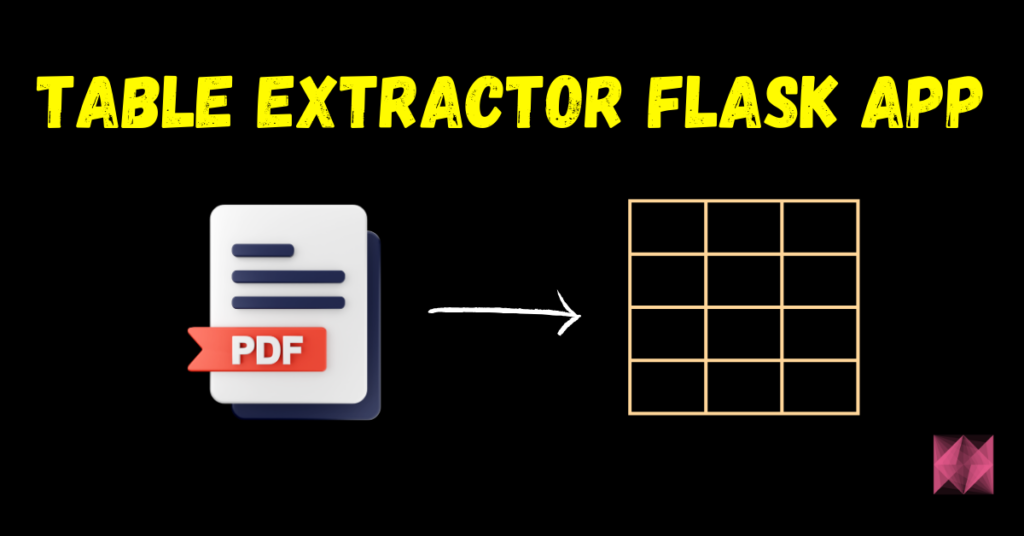

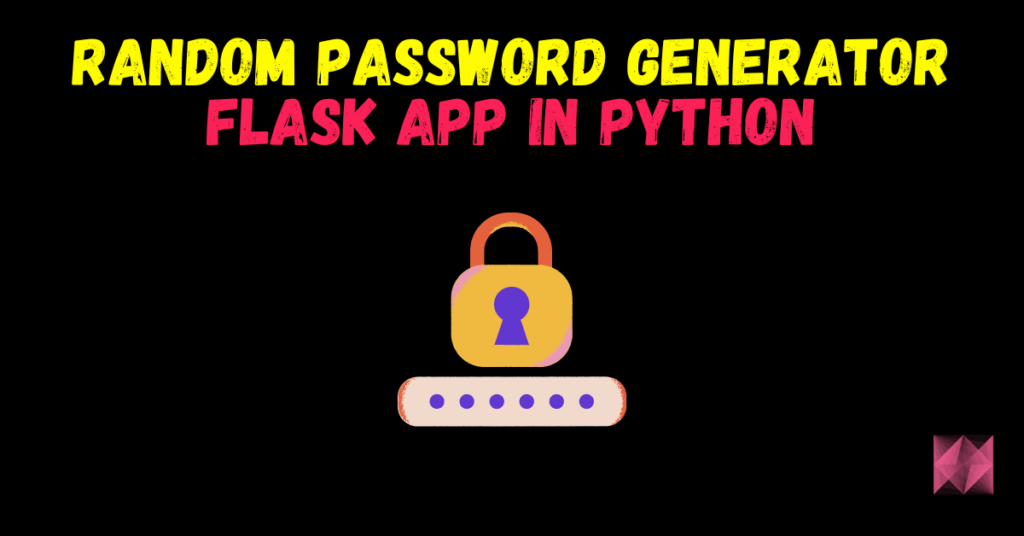
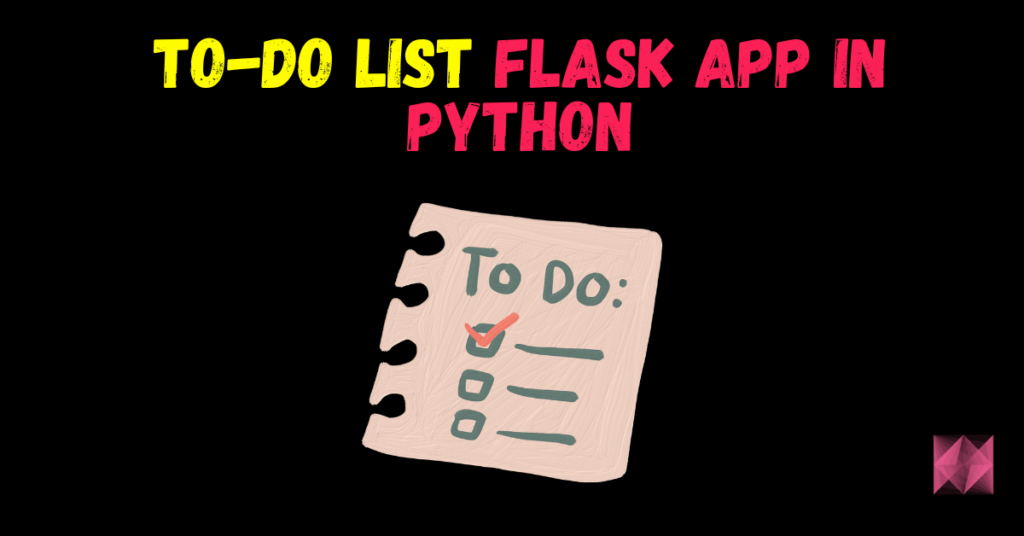
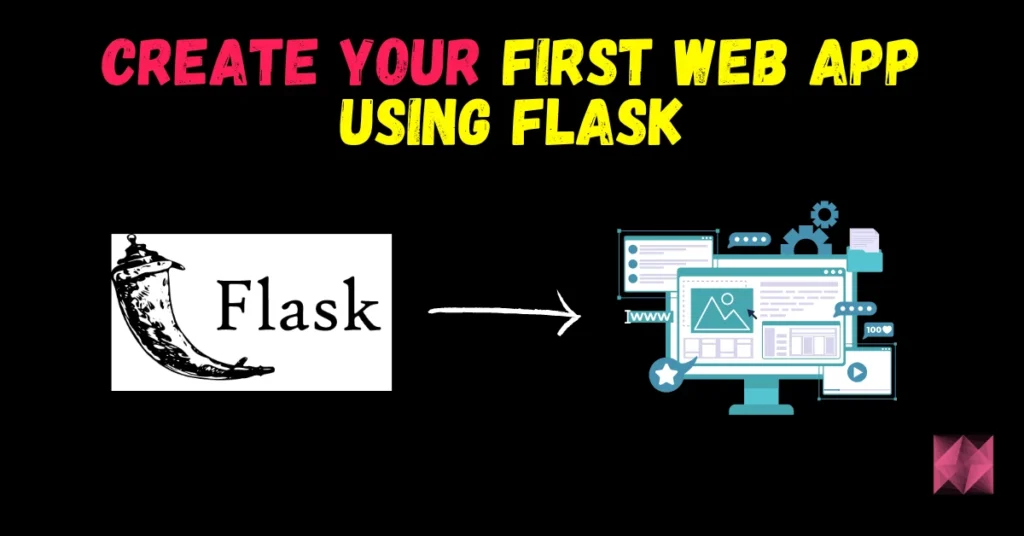

I checked and run your code your working is good but main problem in code is face matching is not good because i register two person and mark attendance so one person mark attendance two person name is showing in screen some seconds same person name is showing and some seconds other person name is showing. Please tell me the solution and why it is not working properly.
Note : I have mentioned my mail, if you have any solution please send on mail
Email : vikrampratapsingh958@gmail.com
how quit after get attendance
Very Help Full Tanks Bro